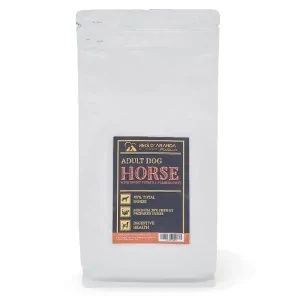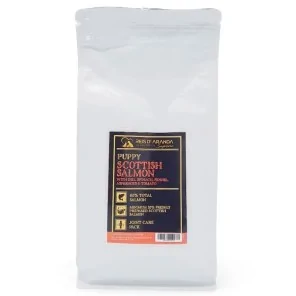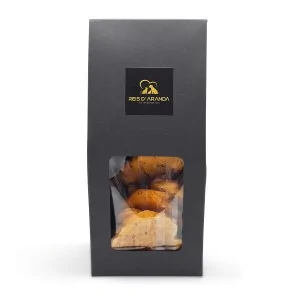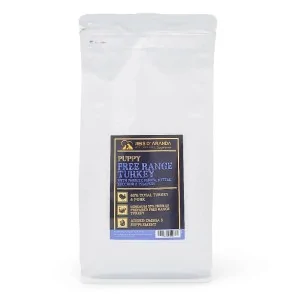Its name says it all: the Vienna blue rabbit comes from Austria. Not only is it beautiful with its shiny blue-grey...
THE LONG-HAIRED PYRENEAN SHEPHERD DOG
INTRODUCTION
The Pyrenean shepherd is a French dog which exists in two varieties: the long-haired and the smooth-faced. Both are recognised as separate breeds by the Fédération Cynologique Internationale. The long-haired breed (or variety) is slightly smaller and, of course, has a longer coat. Both then and now, these dogs perform herding functions as they are a very intelligent and active breed.
THE ORIGIN OF THE PYRENEAN LONGHAIRED SHEEPDOG
Like other Pyrenean shepherd dog breeds such as the Basque shepherd or the Gos d'atur catalá, the long-faced shepherd dogs have an unknown history. However, they have lived in the French Pyrenees for centuries, where they have been used for herding purposes. During the 18th and 19th centuries, these dogs were very valuable to horse traders and cattle drivers, as well as to the army of the First World War for their work as messenger dogs.
Today, some of these dogs still guide and guard herds in the French mountains, but more are living the comfortable life of beloved pets. Even so, the breed is little known in the world and only enjoys a certain popularity in its native France, but its success in Agility championships and other dog sports is making it increasingly famous.
THE STANDARD OF THE PYRENEAN LONGHAIRED SHEPHERD DOG
GENERAL APPEARANCE: On the whole, the Pyrenean Longhaired Shepherd Dog has the same characteristics as the Pyrenean Longhaired Shepherd Dog.
IMPORTANT PROPORTIONS:
- The skull is of approximately the same width and length.
- The muzzle is slightly shorter than the skull.
- The length of the body is almost equal to its height.
- The distance from the elbow to the ground is more than half the size at the withers.
HEAD : Moderately developed, almost flat, with a slightly pronounced central furrow. Becoming harmoniously rounder at the sides. The occipital protuberance is not very pronounced. It is about as broad as it is long. Its front part joins in a gentle slope to the muzzle.
STOP: Not very marked.
FACIAL REGION:
TRUFFLE: Black.
HOCOCO: Straight, a little shorter than the skull. Although tapering to a wedge shape, the tip of the muzzle is not pointed.
LIPS: Not very thick. They perfectly cover the lower jaw and have no apparent corner of the mouth. The edge of the lips and the palate are black or clearly marked with black.
JAW / TEETH: The dentition should be complete. The canines are strong. The articulation is scissor bite. Pincer-joint (tip to tip) is permitted.
Eyes: Expressive, slightly almond shaped, dark brown in colour. They should be neither prominent nor too deep set. Eyes of a different colour are permitted in dogs with blue coat interspersed with black (harlequin or slate grey) in which this is almost always a characteristic. The rims of the eyelids are black irrespective of coat colour.
EARS: Should be fairly short, moderately broad at the base. They should not be set too close to each other on the top of the skull, nor too wide apart. They are triangular, fine, tapering to a point, pendant, flat, very mobile. When the dog is alert, seen from the front, the upper edge visibly extends the transverse line of the skull. They may also be partially erect; in this case, their lower part must also be erect and mobile. Ideally, the upper third or half of the ear should fall to the front or to the side, symmetrically on both ears.
NECK: Rather long, rather muscular, well set off from the shoulders.
BODY: The bones are solid but not heavy, the musculature is lean.
UPPER LINE : Very firm.
WITHERS: Well sprung.
BACK: Fairly long and solid.
LOIN: Short and slightly arched, appearing even more so as the dog's wool is often more abundant on the hindquarter.
Croup: Rather short and rather oblique.
CHEST: Moderately developed, reaching down to the level of the elbow. The ribs are slightly rounded.
FLANCO: Slightly sloping.
TAIL: Not very long, rather low and hooked at the tip, with abundant fringe. In general, when the dog is alert, it hardly extends beyond the upper margin, but may curl towards the front. In countries where the practice is permitted by law, some dogs have docked tails. A rudimentary tail is permitted.
LIMBS:
FOREQUARTERS: Lean, lean, vigorous and well muscled. Lean, strong and well covered with fringe.
Shoulders: Fairly long and moderately oblique.
ARMS: Oblique, of medium length.
FOREARMS: Straight.
Wrist: Wrist joint is pronounced.
METACARPERS: Seen in profile, slightly oblique.
HANDS: Lean, rather flat, forming a pronounced oval. The pads of the feet are dark. The nails, small and hard, are covered with hair which is also found under the feet, between the tubercles.
HINDQUARTERS: The angulations are rather tight. Semi-long haired dogs have limbs without fringes.
Upper thighs: Moderately oblique, not too long, well muscled and ‘ well formed ’.
NECK: Well angulated and on the axis of the body.
LEGS: Rather long and oblique.
HOCKS: Slender, low set, well bent. The hocks are sometimes a little closed.
METATARS: Vertical or very slightly oblique to the front.
FEET: Slender, rather flat, forming a pronounced oval. The pads of the feet are dark. The nails, small and hard, are covered with hair which is also found under the feet, between the tubercles.
SPURS: The hind legs may or may not have single or double dewclaws.
GAIT / MOVEMENT: The Pyrenean Shepherd Dog has a rather slow gait. The trot, its preferred gait, should be free and vigorous. At a short trot, the head is a little high; at a long trot, the head is at the margin of the back. The feet are never too high, the movement is loose, the dog skims the ground.
SKIN: Fine and often streaked with dark patches, regardless of the colour of the coat.
COAT
HAIR: The coat, long or semi-long, but always abundant, is almost straight or slightly wavy, more abundant and woollier on the croup and thighs. Its texture is somewhere between goat's hair and sheep's wool.
The mixture of dry hair and woolly hair can cause in some specimens a sort of tufts or strings called ‘braids’ and sometimes knots or knotted hairs which are gathered like tiles on the rump and thigh. Braids can also be found on the chest and on the forelegs at the elbow. The muzzle is shorter and less abundant. On the tip of the muzzle and sometimes on the whole muzzle, it is stretched and runs from the front to the back.
On the sides, as well as on the cheeks, the hair is longer and raised backwards as in a ‘gust of wind’, from front to back. The eyes should be well visible and not covered by the hair.
COLOUR: Fawn more or less dark, charcoal or not, sometimes with a little white on forechest and limbs; grey more or less light, often with white on head, chest and limbs; blue interspersed with black (harlequin or slate blue).
There are also spotted coats and black or black coats marked with white (limited patches of different colours). Pure coloured coats are preferred.
SIZE:
- Males: 42 to 48 cm.
- Bitches: 40 to 46 cm.
FAULTS: Any departure from the foregoing points should be considered a fault and the seriousness with which the fault should be regarded should be in exact proportion to its degree and its effect upon the health and welfare of the dog.
SERIOUS FAULTS
- Heavy dog, lacking vivacity.
- Skull ogival, bulging forehead, marked or non-existent nasal-frontal depression.
- Square or rectangular muzzle, lack of pigmentation of nose or lips.
- Light coloured eyes or with a deviated expression. Depigmented rims of the eyelids.
- Tail carried curled over or over the back; the so-called ‘squirrel’ tail slanting horizontally over the back; solid vertebrae.
- Too much hair on the head, especially when covering the eyes, and on the muzzle when it takes the form of griffon whiskers. Unsuitable texture, soft, wiry, wavy or curly coat. Coat not dense or abundant.
- COLOUR: Patches of different colour exceeding one third of the coat. Harlequin coat lacking contrast between grey and black or showing fawn highlights. Very dilute coat. Black coat with tan on head and limbs (black with fawn markings).
DISQUALIFYING FAULTS:
- Aggressiveness or extreme shyness.
- Any dog showing clear signs of physical or behavioural abnormalities.
- Nose and eyelids of any colour other than absolute black.
- Overshot or undershot or any malformation of the jaws. Absence of more than 2 teeth, not including PM1. The presence of the canines and the canine teeth is compulsory.
- Natural straight ears
- Eyes of a different colour in dogs other than blue mixed with black (harlequin or slate grey). Patches of depigmentation on the eyelids.
Light yellow eyes. - Loose tail, drooping vertically.
- Curly coat.
- White coat or not indicated in the standard; patches of a different colour exceeding 1/3 of the coat in black dogs.
Faults and disqualifying faults are the same as those indicated for the long-haired variety, except for the coat and proportions.
N.B.:
- Male dogs should have two apparently normal appearing testicles fully descended into the scrotum.
- Only functionally and clinically healthy dogs of typical breed conformation should be used for breeding.
HEALTH OF THE PYRENEAN LONG HAIRED SHEEPDOG
The average life expectancy of a Pyrenean Sheepdog is between 15 and 17 years when properly cared for and fed a good quality diet suitable for its age, it is a fairly healthy breed.
COAT HAIR : The Pyrenean Shepherd Dog can have a rough face or a smooth face. Dogs with rough faces may have a long or moderately long coat and may be wavy or may be straight. Smooth-faced dogs have a moderately long coat which is rough to the touch and there is very little undercoat. Dogs that boast long coats may have naturally corded coats. Therefore, the amount of grooming a Pyrenean Shepherd needs really depends on the type of coat they have, but as a general rule, dogs with shorter, closer coats are lower maintenance in terms of grooming than dogs with longer, corded coats.
Twice weekly brushing is necessary to prevent knots and tangles from forming and to keep coats tidy, although a Pyrenean Shepherd's coat is naturally ‘scruffy’ when the coat is long. They shed little throughout the year, only it may be more during the spring and then again in the autumn when more frequent grooming is usually necessary to keep on top of things and to remove dead and shed hair from a dog's coat. It is also important to regularly check a dog's ears and clean them when necessary. If too much wax builds up, it can lead to a painful infection that can be difficult to remove. In short, prevention is often easier than cure with ear infections.
EXERCISE: The Pyrenean Shepherd is an energetic and intelligent dog and, as such, needs to receive the right amount of daily exercise and mental stimulation to be truly happy and balanced dogs. They need a minimum of 1 hour of exercise per day, with as much off-leash time as possible. If not given the right amount of mental stimulation and exercise every day, a Pyrenean Shepherd would quickly become bored and may even start to display destructive behaviour in the home, which is their way of relieving any stress they feel and not necessarily because they are naughty.
A shorter walk in the morning would be fine, but a longer and more interesting one in the afternoon is a must, with as much off-leash time as possible. These dogs also like to be able to roam in a back garden to really let off steam. However, the fence must be extremely secure to keep these active, high-energy dogs inside, because if they find a weakness in the fence, they will soon escape and could get into all sorts of trouble.
That said, puppies should not be over-exercised because their joints and bones are still growing. This includes not allowing a dog to jump up and down from furniture or up and down stairs. Too much stress on their joints and spine at a young age could result in a dog developing serious problems later in life.
FEEDING: It is important to feed them quality feed with high percentages of meat, such as fish feed or lean meat like pork or horse, Reis d'Aranda has feed of these varieties.
THE PERSONALITY OF THE LONG-HAIRED PYRENEAN SHEPHERD DOG
These dogs are very intelligent, courageous and active. Because of their intelligence, they are very versatile and capable of performing several functions. They are also very loyal dogs and tend to form a very close bond with one person.
Pyrenean Shepherds are very loyal and attached to their family, but tend to be territorial and reserved with strangers. Although they are not usually aggressive, socialisation from an early age is very important to reduce territoriality and allow them to become less sullen.
Although they do not usually present serious behavioural problems, these dogs can be sullen with strangers. In addition, their strong herding instincts may lead them to try to herd children or household pets.
These dogs are definitely herding dogs and live best in a rural environment, but they can also make excellent pets if given the exercise and companionship they need, and are not forced to be friends with everyone.
CONCLUSION
These dogs are very active and familiar with their own but, because of their guard dog nature, they have to be territorial and protect their own from strangers, so good socialisation will be necessary for this dog to also know how to relate to other dog companions, other humans, other animals and their environment in general.
Leave a comment
Log in to post comments
















